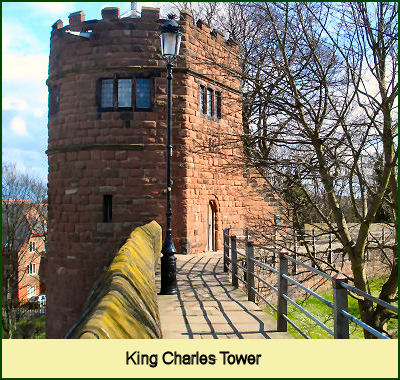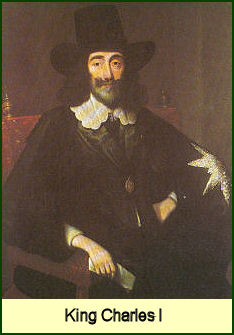King Charles' Tower

 The King Charles Tower, otherwise known as the Phoenix Tower, or the Newton Tower, it is one of the impressive towers on the circuit of Chester's city walls.
The King Charles Tower, otherwise known as the Phoenix Tower, or the Newton Tower, it is one of the impressive towers on the circuit of Chester's city walls.
The tower is of medieval origin and occupies the site of, or is very close close to, the original Roman North East Tower. The tower is a grade I listed building.
The present structure probably originated in the thirteenth century. The red sandstone tower stands to a height of around 70 feet (21 metres) and is in four stages, the lower two of which are below the walkway on the wall. Each of the upper stages contains a chamber. At the level of the walkway, in the third stage, is a round-headed doorway.
The tower came to be used as a meeting place for the city guild company of Painters, Glaziers, Embroiders and Stationers. From this the tower came to be known as the 'Phoenix Tower'. It was restored by the two guilds, and above the door they placed a plaque containing the date 1613 and a carving of a phoenix, the emblem of the Painters.The phoenix emblem may be seen above the entrance door and carved in wood inside the lower floor of the tower.
Legend states that on the 24th of September 1645, during the Civil War, King Charles I stood on the tower and watched his army defeated in the battle of Rowton Moor. A plaque on the tower records the legend, however, this was more likely to be a reference to later battles on Hoole Heath, as Rowton is not actually visible from the tower.
Charles entered the city on the evening of the 23rd of September 1645. The Parliamentarians, lead by Sydenham Poyntz, were informed that Charles had entered the city, and marched through the night to meet the Royalist forces. Charles watched the ensueing batle from the tower. Battle was opened with a Parliamentary charge, which the Royalists drove back, but they were pushed back to the eastern suburbs of the city and finally driven from the field. The king was moved to the cathedral tower, were he was narrowly missed by a bullet fired by a Parliamentary sniper.
By the middle of the seventeenth the tower had fallen into a dilapidated state. Largely due to the battering it had received during the Civil War siege, the upper parts of the tower had to be rebuilt.
